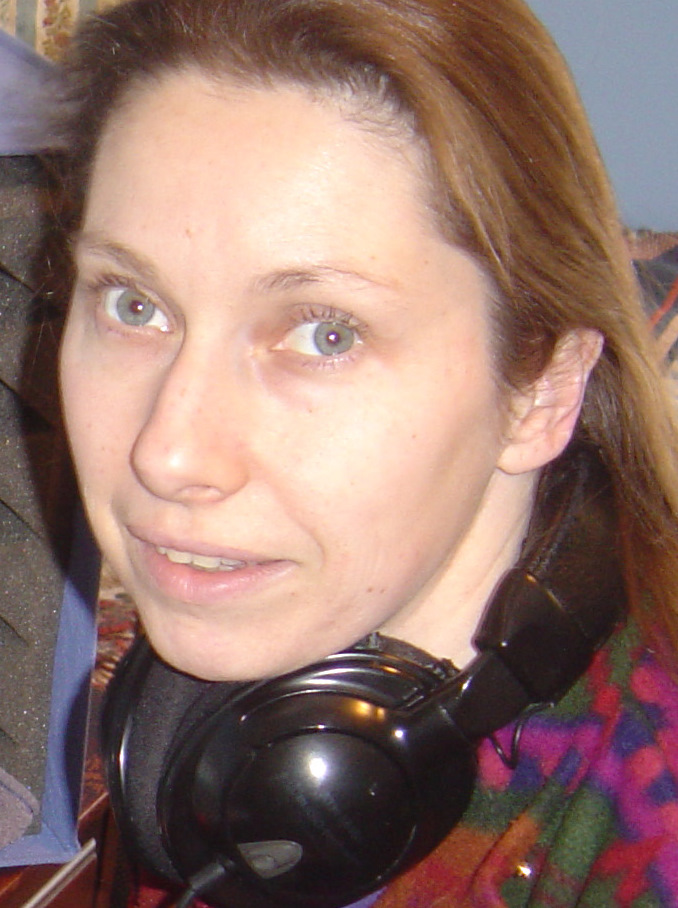|
Telephony Primer, Part 2: How
To Record For So Many Formats
By Liz de Nesnera
Voice Actor
 As the telephony field developed, many different computer systems and many different file formats came to be. And they don't play nicely together! As the telephony field developed, many different computer systems and many different file formats came to be. And they don't play nicely together! If you think MACs and PCs don't get along, think this: with telephony, if you don’t provide the right file format for your client’s system, it’ll sound like the snow on an old TV set.
Just like there are different types of wav files (mono, stereo, 48K, 44.1K, 16bit, 24bit …) and different types of mp3 files (128K, 256, 96K …), there are also different types of telephony audio files.
Just to name a few file types, there are: Dialogic, OKI, InterVoice, Natural Microsystems, CCITT, NeXT/Sun …
WHICH TO USE?
Now, don’t panic. You cannot, and you SHOULD not have to guess as to the correct format the client needs. It is the client’s responsibility to tell you what they need.
Let me repeat that: It is the client’s responsibility to tell you what they need.
But frankly, sometimes they don’t have a clue.
YOU SOLVE IT
So what do you do? This is where you become your client's problem solver.
Basically, when a client says he needs a telephony file format, you need to ask three questions:
If they don’t know the answer, you can tell them that they should be able to find that information by either contacting their hardware vendor, their IT person, or by actually looking at the instruction book that came with the system!
The other option is to Google the name of their hardware yourself for the information. That's up to you. If the client is big enough, it might make you look really good!
But again, unless you give them the right file type, it just won’t play, and they’ll blame you for that. Better to get the answer upfront than by trial and error.
WHAT TO KNOW ...
But let’s say a client tells you: "I need a vox file.”
What’s the format or sound family?
The format is "vox” – and 9 times out of 10, that will be a Dialogic vox file, so you can pretty much go with that assumption.
What’s the bit rate/sound type?
Is it ADPCM or Mu-Law (also pronounced simply "U-Law” – comes from the Greek). ADPCM is always 4bit. Mu-Law is always 8bit.
What’s the sampling rate?
6000 Hz (6K)? 8000 Hz (8K)? Another rate?
With Dialogic, for example, the two most common are:
But the bottom line is that with so many formats out there, you can never assume anything. Just ask.
CREATING FORMATS
So how do you create all these formats? Here’s the bad news:
Most professional audio programs that we use for voice-over do NOT convert to telephony formats.
They will convert to some. SoundForge, for example, can convert to 4bit ADPCM vox, and 8bit 8K CCITT mu-Law wav, but not vox.
CONVERSION SOFTWARE
There is pretty much only one program out there that will convert to all of them: VoxStudio.
It was invented by a company in Belgium and has pretty much cornered the market on telephony file conversion.
Once you get used to the way to format a voice-over script and import it into the software, it’s a powerful and useful program.
However, at over $550 (399 Euros), it’s not a cheap program, and it only works on the PC platform. I would only suggest you get it if you know you’ll be doing a lot of telephony work directly for clients.
CALL FOR HELP
If your eyes haven’t completely glazed over and turned to mush yet, take a break, read over this article a few more times, and if you still have questions, feel free to email me. I’ll be happy to help!
Like I said in Part 1 of this series, telephony is not a glamorous part of the voice-over biz, but it certainly is one of the most consistent.
Liz de Nesnera is a voice actor based in the tri-state New Jersey, New York, Connecticut area. Voicing commercials, narration and telephony in English and French, she also writes an entertaining and informative blog, A Frog in My Throat … or … Un Chat Dans La Gorge.
Web: www.hireliz.com
Email: liz@hireliz.com
Blog: http://blog.hireliz.com
|
|
|
For essential voice-over business strategies
Inspiring interviews help your VO career
With Sean Daeley and Paul Stefano - check it out!
Email alerts to new VoiceOverXtra articles
As of the NEW website launch, 03/22/2012


.gif)






Thanks for the kind words!
I do all types of VO. Telephony is just one of the areas I work in.
I record a lot of eLearning, medical & technical narrations and of course TV and Radio spots.....all in both English & French. :-)
Finding a "niche" is fine, but be open to new opportunities.
Peace!
Liz
I really liked your 2 articles about voice over for telephony. Is telephony the only type of VO work you do, or do you also do others like narrations, commercial, etc?
I'm just getting started and I haven't found my niche yet. I'm currently exploring corporate training, narration, and even telephony. Was wondering if you chose to specialize and exclusively do telephony or if you're also pursuing other type of VO work.
Thanks for sharing your insights, Liz!
Take care,
Scott Reynolds